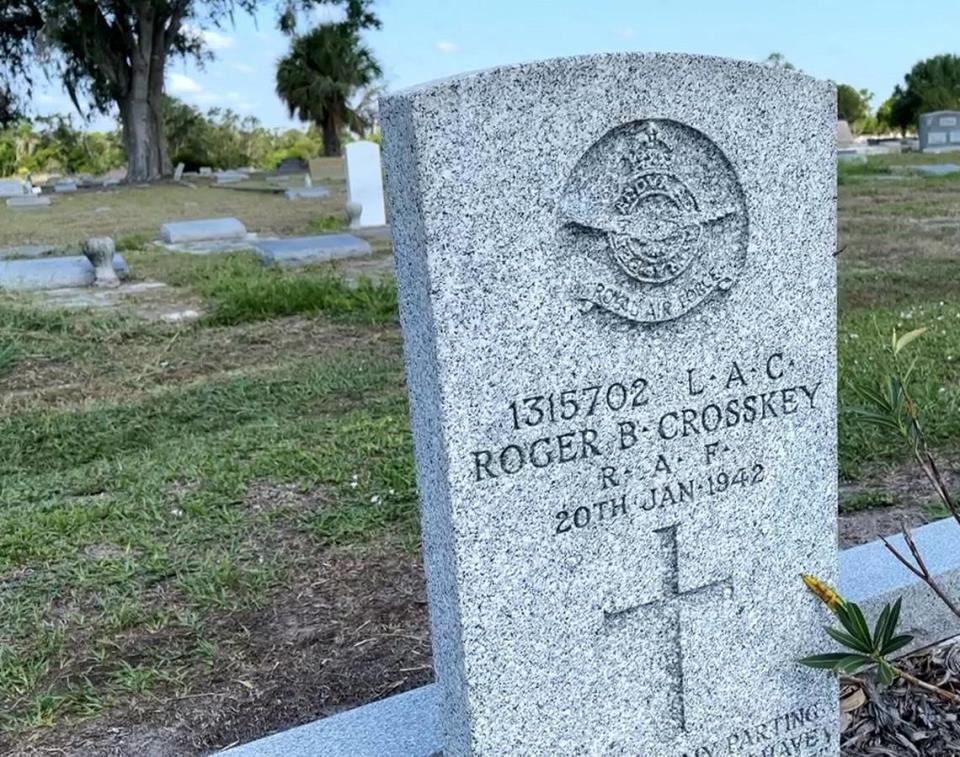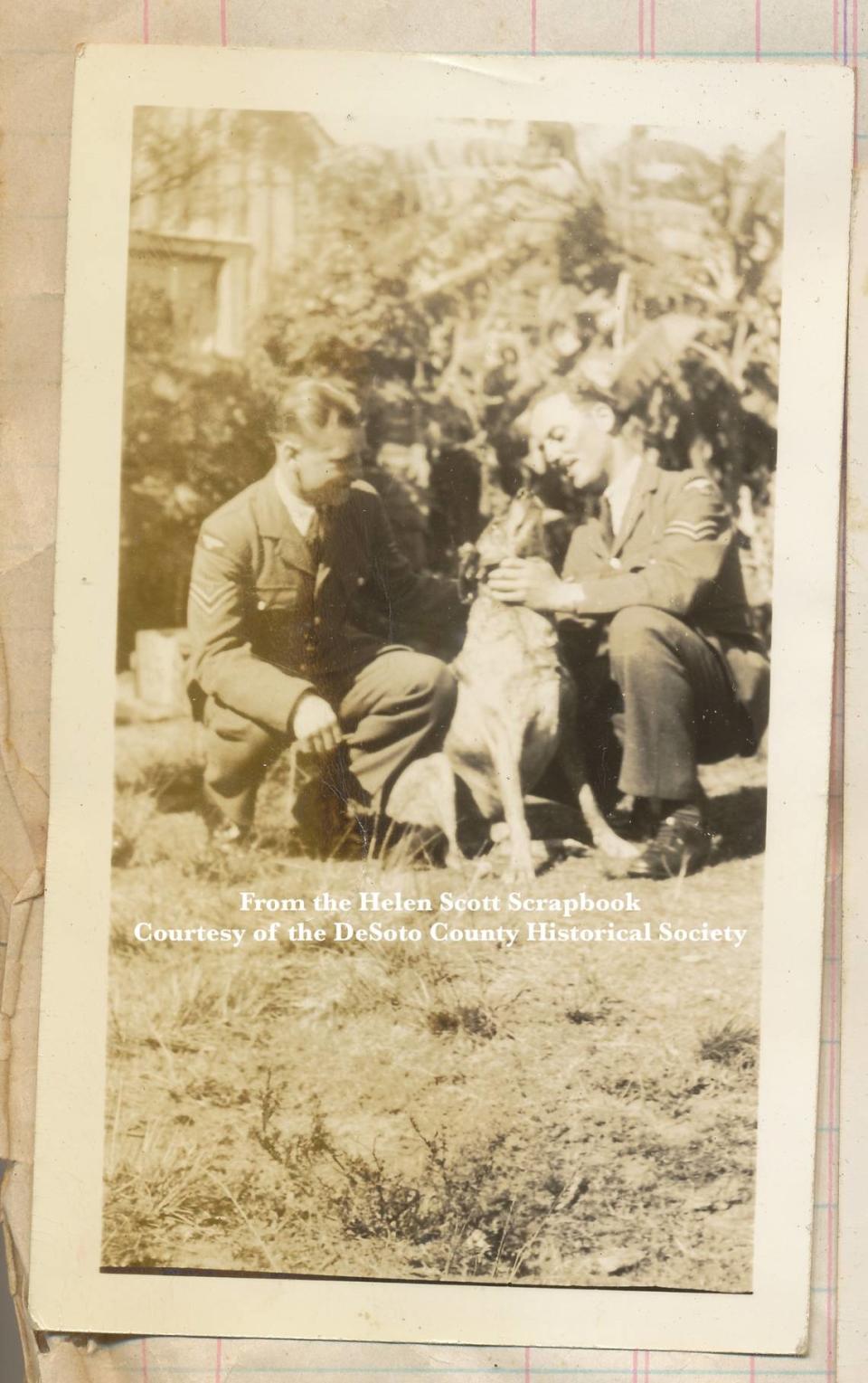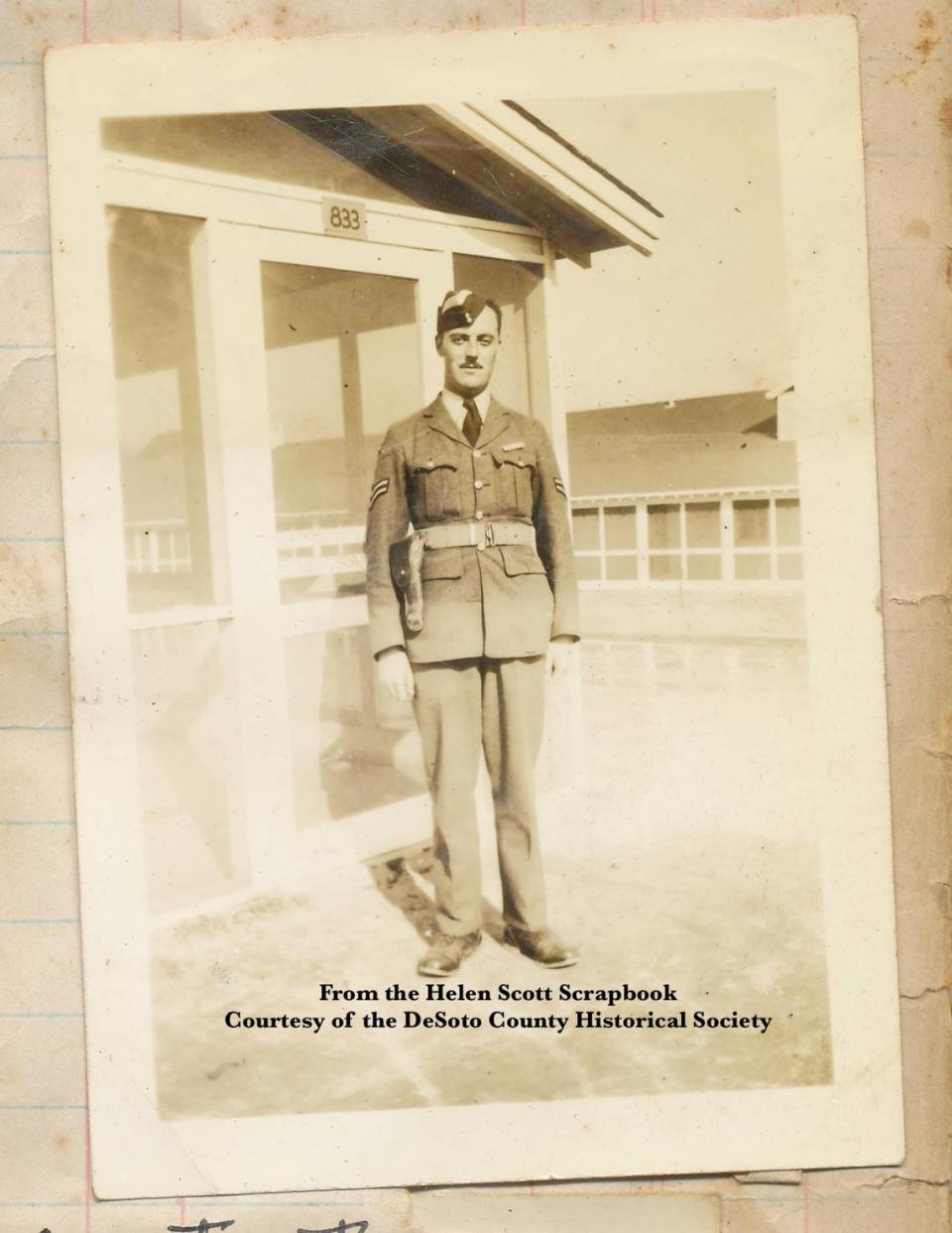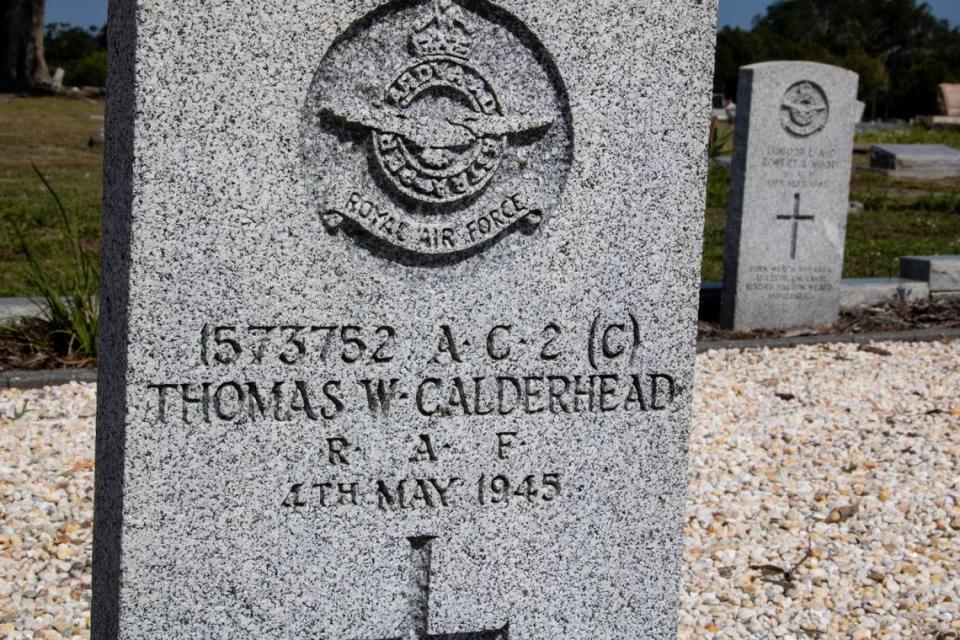Why Memorial Day takes on a British accent in Arcadia, Florida
In a special section of a cemetery in Arcadia, 23 headstones stand in formation, just as the men laying beneath them did 70 years ago.
On Memorial Day, people will gather there under the Union Jack, amid bagpipes and anthems, to honor these British air cadets who died during flight training in Florida during World War II.
The first of 1,800 Royal Air Force cadets — a group of 99 — arrived in Arcadia by train on June 8, 1941, six months before the United States entered the war. The U.S. Army Air Forces had just recommissioned Carlstrom Field, a primary training center during World War I, as well as Riddle Field in Clewiston for advanced training, according to “RAF Wings Over Florida,” a book written by the late Will Largent of Sarasota.
The RAF chose Florida for its reliable weather and the generosity of the U.S. Lend-Lease Act which provided American military equipment to any nation deemed “vital to the defense of the United States.”
Along with American expertise, the cadets also got a huge helping of Southern hospitality.
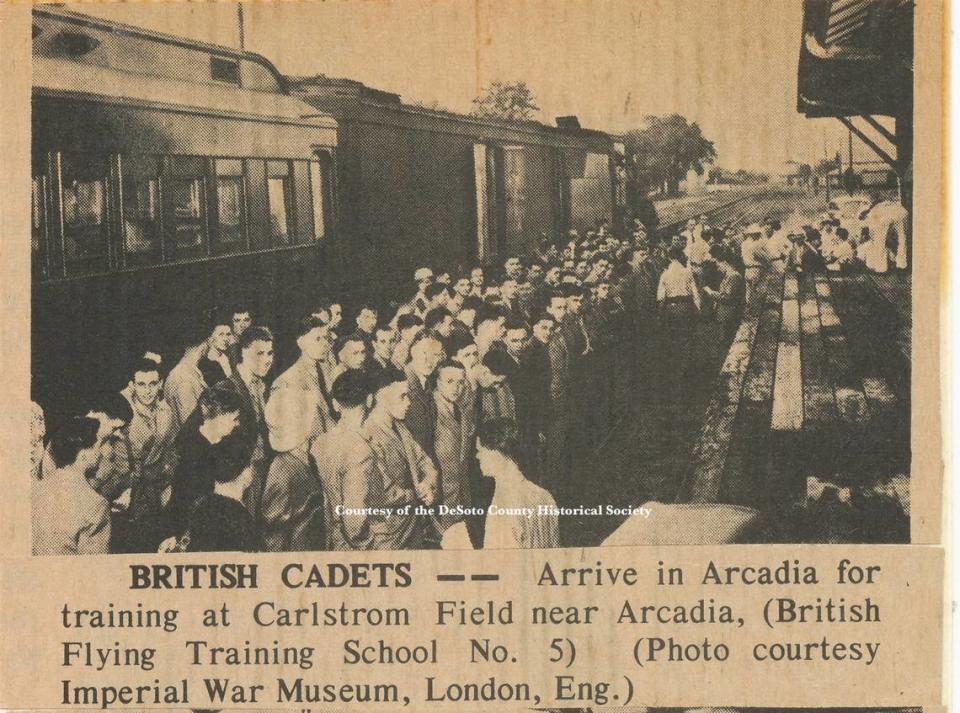
The Brits became instant celebrities. “There was a tremendous patriotic feeling,” among small communities to help England fight fascism, said Largent’s editor and son-in-law, Tod Roberts.
The town embraced the young flyers. “Of course they did,” said Carol Mahler, of the DeSoto County Historical Society. “They loved it.”
Mahler said families would invite the cadets to their homes for Sunday dinners. Of course, the cadets also found pleasant diversions in Sarasota, whether it was a bar, the beaches or companionship at Lido Beach Casino.
Largent’s book quotes a diary entry from one 19-year-old cadet:
“Went into Sarasota at 1300 as tomorrow is my open post day. Booked a room at the Cypress Inn. It only cost me $1 and was very nice. Bought quart of Mr. Boston whiskey for $2.49 at Gator Liquors and carton of Camel cigarettes for $1.19 at B & B, took them back to Cypress Inn and opened Old Boston. It is not Scotch.”
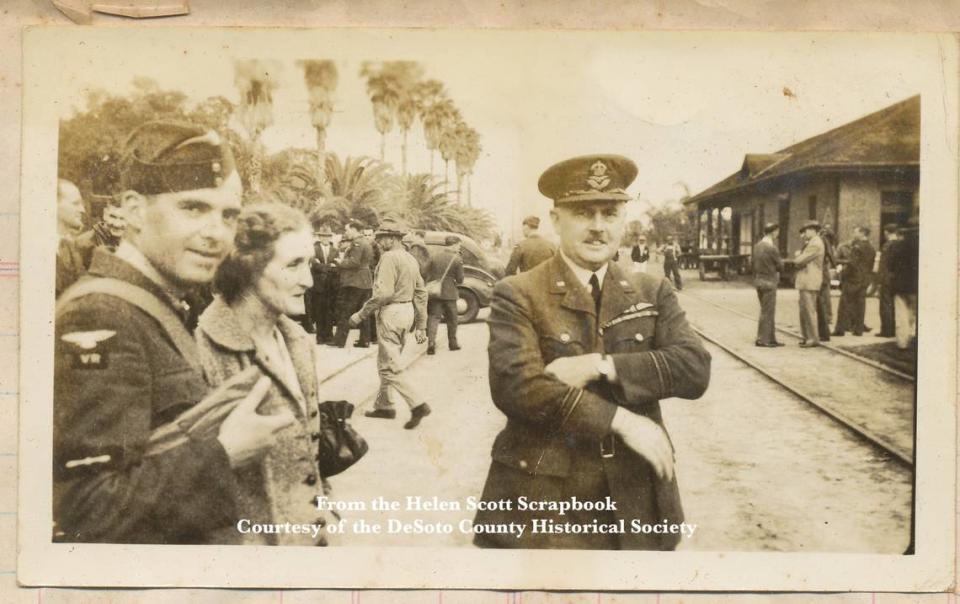
The cost of war
The Arcadia cadets lost their first comrade barely a month after they arrived. Ironically, his death — as well as the only other cadet who died at Carlstrom Field during the war — were not directly related to flying.
On July 22, 1941, 19-year-old Charles Russell of Dublin, Ireland, died of meningitis. The city recorder at the time, Paul Speer, set aside a plot at the city-owned Oak Ridge Cemetery, where Russell could be buried, Mahler said. “He subsequently had to get another plot, and added on, as it was needed.”
The second death at Carlstrom Field was a hazing incident gone wrong.
On Jan. 4, 1942, Alfred Lloyd of Randor, Wales, completed his first solo flight over Arcadia and executed what was described as a “near perfect” landing in a Stearman PT-17 biplane, the cadets’ primary training aircraft.
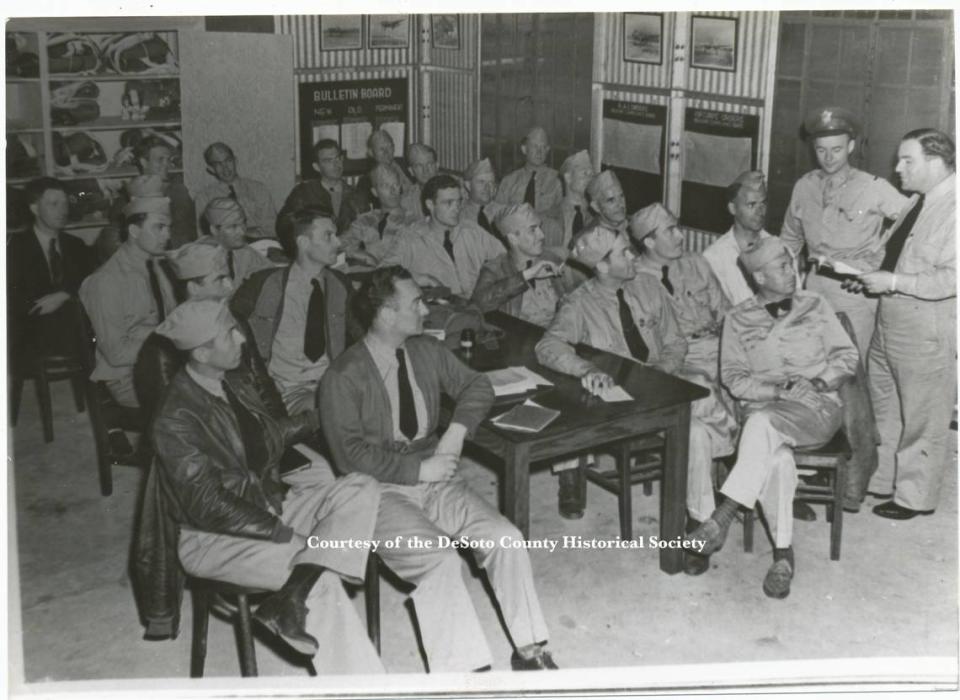
It was a custom that after a cadet’s first solo, classmates would throw him into the swimming pool on the base.
Four of his friends slipped over to Lloyd’s bed that night, carried him outside and tossed him into the pool. The 19-year-old drowned just seven hours after his solo flight.
Among the other deaths, a cadet stationed in Clewiston also died of meningitis; another died in a car crash in LaBelle. The 18 others were killed in aircraft incidents near Clewiston. Since burial plots were already secured in Arcadia, the Clewiston casualties were also buried in Arcadia.
The last of the Arcadia 23 died on May 4, 1945, four days before Germany surrendered. Horace Bowley-Booth, of Stafford, England, and Thomas Calderhead, of Fife, Scotland, were killed when their AT-6 Texan trainer crashed in Belle Glade.
It was the families’ decision to keep the 23 cadets in Florida, Mahler said. “The United States government did offer to send the bodies back after the war and all of the next of kin and families said, please leave them where they lie.”
A city remembers
Memorial Day observances for the RAF cadets began in 1956, organized by the local American Legion post. In the 1970s, the Rotary Club also got involved, said Rotary member and City Councilwoman Judy Wertz Strickland.
“These are the people that made the option to stay here and be buried here. So we as citizens here should honor that decision ... a wartime decision and honor those people at least once a year.”
“Even though these gentlemen never actually fought, we still appreciate the sacrifice that they gave for the fighting for the war effort,” Mahler added. “There are many, many United States citizens who are buried all over the world, who also fought in conflicts and we would like the people in other countries where our men are buried to do the same for us.”
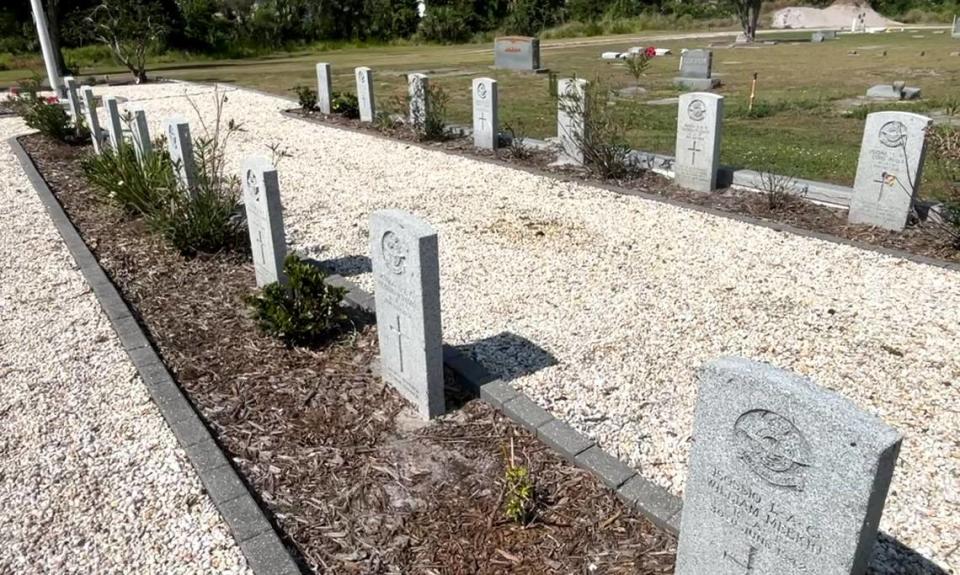
The ceremony begins at 10 a.m. at Oak Ridge Cemetery, 601 N. Johnson Ave., with the raising of the British Union Jack and the RAF ensign. The ceremony also involves reading the names of the 23 cadets. Crosses will also be placed on their headstones.
This story is courtesy of the Community News Collaborative, made possible by a grant from Charles & Margery Barancik Foundation.
